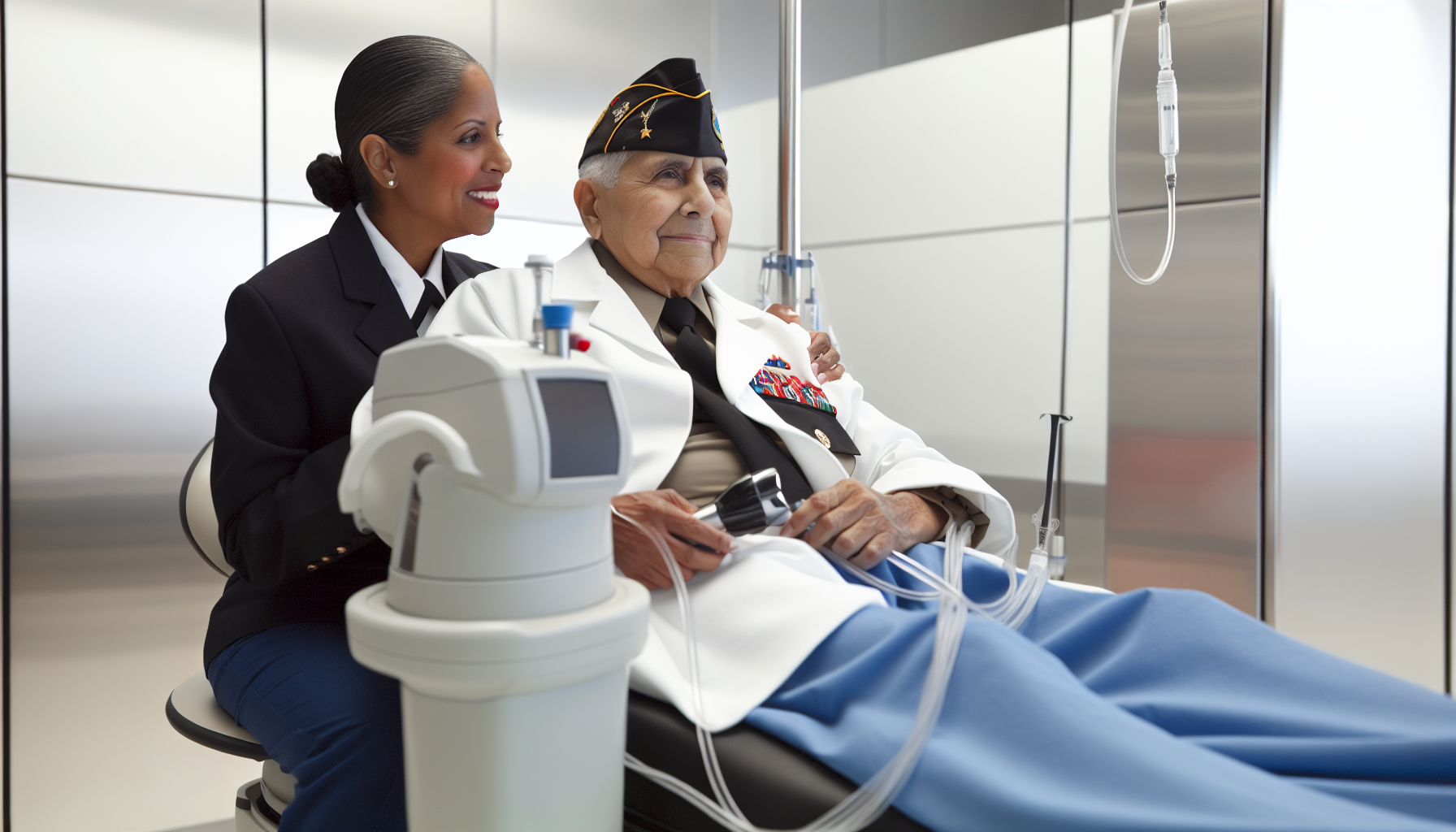In a groundbreaking development for veterans’ healthcare, HistoSonics has secured an exclusive contract with the U.S. Department of Veterans Affairs (VA) for its innovative tumor-destroying histotripsy systems. This partnership marks a significant step forward in providing advanced, non-invasive treatment options for veterans battling various types of tumors, potentially revolutionizing cancer care within the VA healthcare system.
Understanding Histotripsy Technology
At the heart of this advancement is HistoSonics’ Edison histotripsy system, a cutting-edge medical technology that harnesses the power of focused ultrasound. Unlike traditional surgical methods, histotripsy offers a non-invasive approach to tumor treatment.
How Histotripsy Works
The Edison system employs precisely focused ultrasound waves to mechanically break down and liquify tumor tissue. This innovative process eliminates the need for incisions or insertions into the body, setting it apart from conventional surgical procedures.
Key benefits of histotripsy include:
• Minimally invasive treatment
• Reduced recovery time
• Lower risk of complications
• Potential for outpatient procedures
The VA Initiative: Transforming Veterans’ Cancer Care
The exclusive contract between HistoSonics and the VA represents a pivotal moment in veterans’ healthcare. By introducing histotripsy technology into VA medical centers, the initiative aims to significantly improve treatment outcomes for veterans diagnosed with various types of tumors.
Impact on Veterans’ Health
Veterans, who often face unique health challenges due to their service, stand to benefit greatly from this advanced treatment option. The non-invasive nature of histotripsy could mean:
• Less physical strain during treatment
• Quicker return to daily activities
• Improved quality of life during and after treatment
Previous Milestones: Paving the Way for Success
The Edison histotripsy system’s journey to the VA contract is backed by significant achievements and clinical validations.
FDA Clearance for Liver Tumor Treatment
A major milestone in the system’s development was its FDA clearance for treating liver tumors. This approval underscores the technology’s safety and efficacy, providing a solid foundation for its use in treating veterans.
The #HOPE4LIVER Trials
HistoSonics’ pivotal #HOPE4LIVER trials have been instrumental in demonstrating the system’s capabilities. These trials have shown:
• High technical success rates
• Impressive safety profiles
• Effectiveness in treating both primary and metastatic liver tumors
The positive outcomes from these trials have been crucial in building confidence in histotripsy technology among medical professionals and regulatory bodies.
Future Horizons: Expanding Histotripsy Applications
While the current focus is on liver tumors, HistoSonics is actively working to broaden the scope of histotripsy treatment.
Exploring New Cancer Types
Research and development efforts are underway to adapt histotripsy for treating a variety of cancer types, including:
• Pancreatic cancer
• Breast cancer
• Bone cancer (osteosarcoma)
• Soft tissue sarcoma
• Brain cancer
• Oral cancers
This expansion could potentially revolutionize cancer treatment across multiple specialties, offering hope to patients with diverse diagnoses.
Beyond Cancer: New Frontiers
The potential applications of histotripsy extend beyond cancer treatment. Researchers are exploring its use in:
• Cardiovascular conditions
• Neurological disorders
• Urological issues
These investigations highlight the versatility of histotripsy technology and its potential to transform various areas of medicine.
The Broader Impact: Revolutionizing Cancer Treatment
The HistoSonics-VA contract is more than just a business agreement; it represents a significant leap forward in cancer treatment methodologies.
Advantages Over Traditional Methods
Compared to conventional surgical approaches, histotripsy offers several advantages:
• Reduced risk of surgical complications
• Shorter hospital stays
• Potential for repeated treatments if necessary
• Preservation of healthy tissue surrounding tumors
Improving Patient Experience
By offering a less invasive alternative, histotripsy has the potential to significantly improve the overall patient experience. This includes:
• Reduced anxiety related to surgical procedures
• Minimal scarring
• Faster recovery times
• Improved psychological well-being during treatment
Frequently Asked Questions
1. What is histotripsy?
Histotripsy is a non-invasive medical treatment that uses focused ultrasound waves to mechanically break down and liquify tumor tissue without the need for incisions.
2. Is histotripsy FDA-approved?
Yes, the Edison histotripsy system has received FDA clearance for treating liver tumors.
3. Can histotripsy treat all types of cancer?
Currently, it’s approved for liver tumors, but research is ongoing for its application in other cancer types, including pancreatic, breast, and brain cancers.
4. How does histotripsy compare to traditional surgery?
Histotripsy is non-invasive, typically has shorter recovery times, and may have fewer complications compared to traditional surgical methods.
5. Will histotripsy be available at all VA medical centers?
The exclusive contract suggests a rollout across VA facilities, but specific implementation details may vary.
6. Are there any side effects of histotripsy treatment?
While generally considered safe, potential side effects can include temporary discomfort or bruising at the treatment site. Specific risks should be discussed with a healthcare provider.
Conclusion: A New Era in Veterans’ Cancer Care
The exclusive contract between HistoSonics and the VA for histotripsy systems marks the beginning of a new chapter in veterans’ healthcare. By bringing this innovative, non-invasive technology to those who have served our country, we’re not just treating tumors – we’re potentially transforming lives.
As research continues and applications expand, histotripsy stands poised to revolutionize not only cancer treatment but potentially a broad spectrum of medical interventions. For veterans and the broader medical community alike, this development represents hope, innovation, and a glimpse into the future of personalized, minimally invasive medical care.
The journey of histotripsy from concept to clinical application is a testament to the power of medical innovation. As we look to the future, the potential impact of this technology on patient care, particularly for our veterans, is both exciting and promising.
